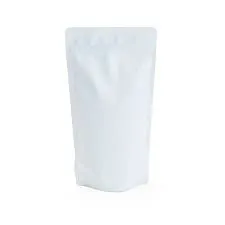- Afrikaans
- Albanian
- Amharic
- Arabic
- Armenian
- Azerbaijani
- Basque
- Belarusian
- Bengali
- Bosnian
- Bulgarian
- Catalan
- Cebuano
- chinese_simplified
- chinese_traditional
- Corsican
- Croatian
- Czech
- Danish
- Dutch
- English
- Esperanto
- Estonian
- Finnish
- French
- Frisian
- Galician
- Georgian
- German
- Greek
- Gujarati
- haitian_creole
- hausa
- hawaiian
- Hebrew
- Hindi
- Miao
- Hungarian
- Icelandic
- igbo
- Indonesian
- irish
- Italian
- Japanese
- Javanese
- Kannada
- kazakh
- Khmer
- Rwandese
- Korean
- Kurdish
- Kyrgyz
- Lao
- Latin
- Latvian
- Lithuanian
- Luxembourgish
- Macedonian
- Malgashi
- Malay
- Malayalam
- Maltese
- Maori
- Marathi
- Mongolian
- Myanmar
- Nepali
- Norwegian
- Norwegian
- Occitan
- Pashto
- Persian
- Polish
- Portuguese
- Punjabi
- Romanian
- Russian
- Samoan
- scottish-gaelic
- Serbian
- Sesotho
- Shona
- Sindhi
- Sinhala
- Slovak
- Slovenian
- Somali
- Spanish
- Sundanese
- Swahili
- Swedish
- Tagalog
- Tajik
- Tamil
- Tatar
- Telugu
- Thai
- Turkish
- Turkmen
- Ukrainian
- Urdu
- Uighur
- Uzbek
- Vietnamese
- Welsh
- Bantu
- Yiddish
- Yoruba
- Zulu
Exploring the Unique Structure and Properties of Silica Gel in Various Applications
The Structure of Silica Gel An In-Depth Analysis
Silica gel, often recognized for its moisture-absorbing properties, is a form of silicon dioxide (SiO2) that has gained prominence in various industrial and domestic applications. Its unique structure contributes significantly to its functionality. Understanding the structure of silica gel not only illuminates its properties but also its wide-ranging uses in fields such as pharmaceuticals, food storage, and electronics.
Basic Composition and Formation
Silica gel is primarily composed of silicon and oxygen, with each silicon atom bonded to four oxygen atoms in a tetrahedral arrangement. This tetrahedral structure allows for a three-dimensional network to form, giving silica its rigidity and stability. In its natural form, silicon dioxide commonly exists as quartz, but the structure of silica gel is distinct due to its amorphous (non-crystalline) nature. This amorphous state is achieved through the controlled hydrolysis of sodium silicate or by the condensation of silicate solutions.
Porosity and Surface Area
One of the defining features of silica gel is its high porosity, which results from its unique structural framework. During synthesis, silica gel forms numerous interconnected pores, varying in size and distribution. This porous structure creates vast internal surface areas, allowing it to adsorb and hold moisture effectively. In laboratory settings, the specific surface area of silica gel can range from 300 to 800 square meters per gram. The large surface area facilitates various interactions with moisture and other substances, making silica gel an efficient desiccant.
Acidic Properties and Functional Groups
silica gel structure

Besides its porous nature, the surface chemistry of silica gel is vital to its functionality. Silica gel particles can exhibit weakly acidic properties due to the presence of silanol (Si-OH) groups on their surfaces. These functional groups can interact with polar molecules, enhancing silica gel’s ability to adsorb water vapor. The bond between the silanol groups and water molecules allows for effective moisture retention, making silica gel an ideal choice for preventing spoilage in packaged goods.
Types of Silica Gel
Silica gel is available in several forms, including granular, bead, and powdered variations. The granular form is widely used for industrial applications, while beads are favored for their uniform size and improved flow characteristics. Each type is designed to maximize surface area and enhance moisture absorption rates. Moreover, silica gel can be modified through treatments to include other functional groups, which can tailor its properties for specific applications. For example, colored silica gels often contain indicators that change color upon saturation, thus providing a visual cue for when the desiccant needs to be replaced.
Applications of Silica Gel
Silica gel's unique structural characteristics enable its use in a plethora of applications. In the food industry, it is employed to preserve the freshness of products by inhibiting moisture-related spoilage. In pharmaceuticals, silica gel protects sensitive ingredients from humidity, ensuring their efficacy and stability. Additionally, in electronics, silica gel is used to protect delicate components against moisture damage during shipping and storage.
Conclusion
The structure of silica gel is a fascinating subject that intertwines chemistry, material science, and practical application. Its amorphous nature, coupled with a high degree of porosity and unique surface chemistry, positions silica gel as a versatile and effective material for moisture control. As industries continue to thrive and evolve, the demand for reliable silica gel solutions is likely to grow, reinforcing its significance in modern science and technology. Embracing advancements in silica gel technology may lead to even more innovative applications in the years to come, demonstrating the ongoing relevance of this seemingly simple substance.













